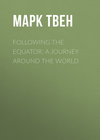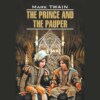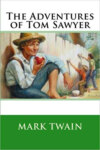Read the book: «Following the Equator: A Journey Around the World», page 22
CHAPTER XLIII
Hunger is the handmaid of genius
– Pudd’nhead Wilson’s New Calendar.
One day during our stay in Bombay there was a criminal trial of a most interesting sort, a terribly realistic chapter out of the “Arabian Nights,” a strange mixture of simplicities and pieties and murderous practicalities, which brought back the forgotten days of Thuggee and made them live again; in fact, even made them believable. It was a case where a young girl had been assassinated for the sake of her trifling ornaments, things not worth a laborer’s day’s wages in America. This thing could have been done in many other countries, but hardly with the cold business-like depravity, absence of fear, absence of caution, destitution of the sense of horror, repentance, remorse, exhibited in this case. Elsewhere the murderer would have done his crime secretly, by night, and without witnesses; his fears would have allowed him no peace while the dead body was in his neighborhood; he would not have rested until he had gotten it safe out of the way and hidden as effectually as he could hide it. But this Indian murderer does his deed in the full light of day, cares nothing for the society of witnesses, is in no way incommoded by the presence of the corpse, takes his own time about disposing of it, and the whole party are so indifferent, so phlegmatic, that they take their regular sleep as if nothing was happening and no halters hanging over them; and these five bland people close the episode with a religious service. The thing reads like a Meadows-Taylor Thug-tale of half a century ago, as may be seen by the official report of the trial:
“At the Mazagon Police Court yesterday, Superintendent Nolan again charged Tookaram Suntoo Savat Baya, woman, her daughter Krishni, and Gopal Vithoo Bhanayker, before Mr. Phiroze Hoshang Dastur, Fourth Presidency Magistrate, under sections 302 and 109 of the Code, with having on the night of the 30th of December last murdered a Hindoo girl named Cassi, aged 12, by strangulation, in the room of a chawl at Jakaria Bunder, on the Sewriroad, and also with aiding and abetting each other in the commission of the offense.
“Mr. F. A. Little, Public Prosecutor, conducted the case on behalf of the Crown, the accused being undefended.
“Mr. Little applied under the provisions of the Criminal Procedure Code to tender pardon to one of the accused, Krishni, woman, aged 22, on her undertaking to make a true and full statement of facts under which the deceased girl Cassi was murdered.
“The Magistrate having granted the Public Prosecutor’s application, the accused Krishni went into the witness-box, and, on being examined by Mr. Little, made the following confession: – I am a mill-hand employed at the Jubilee Mill. I recollect the day (Tuesday); on which the body of the deceased Cassi was found. Previous to that I attended the mill for half a day, and then returned home at 3 in the afternoon, when I saw five persons in the house, viz.: the first accused Tookaram, who is my paramour, my mother, the second accused Baya, the accused Gopal, and two guests named Ramji Daji and Annaji Gungaram. Tookaram rented the room of the chawl situated at Jakaria Bunder-road from its owner, Girdharilal Radhakishan, and in that room I, my paramour, Tookaram, and his younger brother, Yesso Mahadhoo, live. Since his arrival in Bombay from his native country Yesso came and lived with us. When I returned from the mill on the afternoon of that day, I saw the two guests seated on a cot in the veranda, and a few minutes after the accused Gopal came and took his seat by their side, while I and my mother were seated inside the room. Tookaram, who had gone out to fetch some ‘pan’ and betelnuts, on his return home had brought the two guests with him. After returning home he gave them ‘pan supari’. While they were eating it my mother came out of the room and inquired of one of the guests, Ramji, what had happened to his foot, when he replied that he had tried many remedies, but they had done him no good. My mother then took some rice in her hand and prophesied that the disease which Ramji was suffering from would not be cured until he returned to his native country. In the meantime the deceased Casi came from the direction of an out-house, and stood in front on the threshold of our room with a ‘lota’ in her hand. Tookaram then told his two guests to leave the room, and they then went up the steps towards the quarry. After the guests had gone away, Tookaram seized the deceased, who had come into the room, and he afterwards put a waistband around her, and tied her to a post which supports a loft. After doing this, he pressed the girl’s throat, and, having tied her mouth with the ‘dhotur’ (now shown in Court), fastened it to the post. Having killed the girl, Tookaram removed her gold head ornament and a gold ‘putlee’, and also took charge of her ‘lota’. Besides these two ornaments Cassi had on her person ear-studs, a nose-ring, some silver toe-rings, two necklaces, a pair of silver anklets and bracelets. Tookaram afterwards tried to remove the silver amulets, the ear-studs, and the nose-ring; but he failed in his attempt. While he was doing so, I, my mother, and Gopal were present. After removing the two gold ornaments, he handed them over to Gopal, who was at the time standing near me. When he killed Cassi, Tookaram threatened to strangle me also if I informed any one of this. Gopal and myself were then standing at the door of our room, and we both were threatened by Tookaram. My mother, Baya, had seized the legs of the deceased at the time she was killed, and whilst she was being tied to the post. Cassi then made a noise. Tookaram and my mother took part in killing the girl. After the murder her body was wrapped up in a mattress and kept on the loft over the door of our room. When Cassi was strangled, the door of the room was fastened from the inside by Tookaram. This deed was committed shortly after my return home from work in the mill. Tookaram put the body of the deceased in the mattress, and, after it was left on the loft, he went to have his head shaved by a barber named Sambhoo Raghoo, who lives only one door away from me. My mother and myself then remained in the possession of the information. I was slapped and threatened by my paramour, Tookaram, and that was the only reason why I did not inform any one at that time. When I told Tookaram that I would give information of the occurrence, he slapped me. The accused Gopal was asked by Tookaram to go back to his room, and he did so, taking away with him the two gold ornaments and the ‘lota’. Yesso Mahadhoo, a brother-in-law of Tookaram, came to the house and asked Tookaram why he was washing, the water-pipe being just opposite. Tookaram replied that he was washing his dhotur, as a fowl had polluted it. About 6 o’clock of the evening of that day my mother gave me three pice and asked me to buy a cocoanut, and I gave the money to Yessoo, who went and fetched a cocoanut and some betel leaves. When Yessoo and others were in the room I was bathing, and, after I finished my bath, my mother took the cocoanut and the betel leaves from Yessoo, and we five went to the sea. The party consisted of Tookaram, my mother, Yessoo, Tookaram’s younger brother, and myself. On reaching the seashore, my mother made the offering to the sea, and prayed to be pardoned for what we had done. Before we went to the sea, some one came to inquire after the girl Cassi. The police and other people came to make these inquiries both before and after we left the house for the seashore. The police questioned my mother about the girl, and she replied that Cassi had come to her door, but had left. The next day the police questioned Tookaram, and he, too, gave a similar reply. This was said the same night when the search was made for the girl. After the offering was made to the sea, we partook of the cocoanut and returned home, when my mother gave me some food; but Tookaram did not partake of any food that night. After dinner I and my mother slept inside the room, and Tookaram slept on a cot near his brother-in-law, Yessoo Mahadhoo, just outside the door. That was not the usual place where Tookaram slept. He usually slept inside the room. The body of the deceased remained on the loft when I went to sleep. The room in which we slept was locked, and I heard that my paramour, Tookaram, was restless outside. About 3 o’clock the following morning Tookaram knocked at the door, when both myself and my mother opened it. He then told me to go to the steps leading to the quarry, and see if any one was about. Those steps lead to a stable, through which we go to the quarry at the back of the compound. When I got to the steps I saw no one there. Tookaram asked me if any one was there, and I replied that I could see no one about. He then took the body of the deceased from the loft, and having wrapped it up in his saree, asked me to accompany him to the steps of the quarry, and I did so. The ‘saree’ now produced here was the same. Besides the ‘saree’, there was also a ‘cholee’ on the body. He then carried the body in his arms, and went up the steps, through the stable, and then to the right hand towards a Sahib’s bungalow, where Tookaram placed the body near a wall. All the time I and my mother were with him. When the body was taken down, Yessoo was lying on the cot. After depositing the body under the wall, we all returned home, and soon after 5 a.m. the police again came and took Tookaram away. About an hour after they returned and took me and my mother away. We were questioned about it, when I made a statement. Two hours later I was taken to the room, and I pointed out this waistband, the ‘dhotur’, the mattress, and the wooden post to Superintendent Nolan and Inspectors Roberts and Rashanali, in the presence of my mother and Tookaram. Tookaram killed the girl Cassi for her ornaments, which he wanted for the girl to whom he was shortly going to be married. The body was found in the same place where it was deposited by Tookaram.”
The criminal side of the native has always been picturesque, always readable. The Thuggee and one or two other particularly outrageous features of it have been suppressed by the English, but there is enough of it left to keep it darkly interesting. One finds evidence of these survivals in the newspapers. Macaulay has a light-throwing passage upon this matter in his great historical sketch of Warren Hastings, where he is describing some effects which followed the temporary paralysis of Hastings’ powerful government brought about by Sir Philip Francis and his party:
“The natives considered Hastings as a fallen man; and they acted after their kind. Some of our readers may have seen, in India, a cloud of crows pecking a sick vulture to death – no bad type of what happens in that country as often as fortune deserts one who has been great and dreaded. In an instant all the sycophants, who had lately been ready to lie for him, to forge for him, to pander for him, to poison for him, hasten to purchase the favor of his victorious enemies by accusing him. An Indian government has only to let it be understood that it wishes a particular man to be ruined, and in twenty-four hours it will be furnished with grave charges, supported by depositions so full and circumstantial that any person unaccustomed to Asiatic mendacity would regard them as decisive. It is well if the signature of the destined victim is not counterfeited at the foot of some illegal compact, and if some treasonable paper is not slipped into a hiding-place in his house.”
That was nearly a century and a quarter ago. An article in one of the chief journals of India (the Pioneer) shows that in some respects the native of to-day is just what his ancestor was then. Here are niceties of so subtle and delicate a sort that they lift their breed of rascality to a place among the fine arts, and almost entitle it to respect:
“The records of the Indian courts might certainly be relied upon to prove that swindlers as a class in the East come very close to, if they do not surpass, in brilliancy of execution and originality of design the most expert of their fraternity in Europe and America. India in especial is the home of forgery. There are some particular districts which are noted as marts for the finest specimens of the forger’s handiwork. The business is carried on by firms who possess stores of stamped papers to suit every emergency. They habitually lay in a store of fresh stamped papers every year, and some of the older and more thriving houses can supply documents for the past forty years, bearing the proper water-mark and possessing the genuine appearance of age. Other districts have earned notoriety for skilled perjury, a pre-eminence that excites a respectful admiration when one thinks of the universal prevalence of the art, and persons desirous of succeeding in false suits are ready to pay handsomely to avail themselves of the services of these local experts as witnesses.”
Various instances illustrative of the methods of these swindlers are given. They exhibit deep cunning and total depravity on the part of the swindler and his pals, and more obtuseness on the part of the victim than one would expect to find in a country where suspicion of your neighbor must surely be one of the earliest things learned. The favorite subject is the young fool who has just come into a fortune and is trying to see how poor a use he can put it to. I will quote one example:
“Sometimes another form of confidence trick is adopted, which is invariably successful. The particular pigeon is spotted, and, his acquaintance having been made, he is encouraged in every form of vice. When the friendship is thoroughly established, the swindler remarks to the young man that he has a brother who has asked him to lend him Rs.10,000. The swindler says he has the money and would lend it; but, as the borrower is his brother, he cannot charge interest. So he proposes that he should hand the dupe the money, and the latter should lend it to the swindler’s brother, exacting a heavy pre-payment of interest which, it is pointed out, they may equally enjoy in dissipation. The dupe sees no objection, and on the appointed day receives Rs.7,000 from the swindler, which he hands over to the confederate. The latter is profuse in his thanks, and executes a promissory note for Rs.10,000, payable to bearer. The swindler allows the scheme to remain quiescent for a time, and then suggests that, as the money has not been repaid and as it would be unpleasant to sue his brother, it would be better to sell the note in the bazaar. The dupe hands the note over, for the money he advanced was not his, and, on being informed that it would be necessary to have his signature on the back so as to render the security negotiable, he signs without any hesitation. The swindler passes it on to confederates, and the latter employ a respectable firm of solicitors to ask the dupe if his signature is genuine. He admits it at once, and his fate is sealed. A suit is filed by a confederate against the dupe, two accomplices being made co-defendants. They admit their Signatures as indorsers, and the one swears he bought the note for value from the dupe The latter has no defense, for no court would believe the apparently idle explanation of the manner in which he came to endorse the note.”
There is only one India! It is the only country that has a monopoly of grand and imposing specialties. When another country has a remarkable thing, it cannot have it all to itself – some other country has a duplicate. But India – that is different. Its marvels are its own; the patents cannot be infringed; imitations are not possible. And think of the size of them, the majesty of them, the weird and outlandish character of the most of them!
There is the Plague, the Black Death: India invented it; India is the cradle of that mighty birth.
The Car of Juggernaut was India’s invention.
So was the Suttee; and within the time of men still living eight hundred widows willingly, and, in fact, rejoicingly, burned themselves to death on the bodies of their dead husbands in a single year. Eight hundred would do it this year if the British government would let them.
Famine is India’s specialty. Elsewhere famines are inconsequential incidents – in India they are devastating cataclysms; in one case they annihilate hundreds; in the other, millions.
India has 2,000,000 gods, and worships them all. In religion all other countries are paupers; India is the only millionaire.
With her everything is on a giant scale – even her poverty; no other country can show anything to compare with it. And she has been used to wealth on so vast a scale that she has to shorten to single words the expressions describing great sums. She describes 100,000 with one word – a ‘lahk’; she describes ten millions with one word – a ‘crore’.
In the bowels of the granite mountains she has patiently carved out dozens of vast temples, and made them glorious with sculptured colonnades and stately groups of statuary, and has adorned the eternal walls with noble paintings. She has built fortresses of such magnitude that the show-strongholds of the rest of the world are but modest little things by comparison; palaces that are wonders for rarity of materials, delicacy and beauty of workmanship, and for cost; and one tomb which men go around the globe to see. It takes eighty nations, speaking eighty languages, to people her, and they number three hundred millions.
On top of all this she is the mother and home of that wonder of wonders – caste – and of that mystery of mysteries, the satanic brotherhood of the Thugs.
India had the start of the whole world in the beginning of things. She had the first civilization; she had the first accumulation of material wealth; she was populous with deep thinkers and subtle intellects; she had mines, and woods, and a fruitful soil. It would seem as if she should have kept the lead, and should be to-day not the meek dependent of an alien master, but mistress of the world, and delivering law and command to every tribe and nation in it. But, in truth, there was never any possibility of such supremacy for her. If there had been but one India and one language – but there were eighty of them! Where there are eighty nations and several hundred governments, fighting and quarreling must be the common business of life; unity of purpose and policy are impossible; out of such elements supremacy in the world cannot come. Even caste itself could have had the defeating effect of a multiplicity of tongues, no doubt; for it separates a people into layers, and layers, and still other layers, that have no community of feeling with each other; and in such a condition of things as that, patriotism can have no healthy growth.
It was the division of the country into so many States and nations that made Thuggee possible and prosperous. It is difficult to realize the situation. But perhaps one may approximate it by imagining the States of our Union peopled by separate nations, speaking separate languages, with guards and custom-houses strung along all frontiers, plenty of interruptions for travelers and traders, interpreters able to handle all the languages very rare or non-existent, and a few wars always going on here and there and yonder as a further embarrassment to commerce and excursioning. It would make intercommunication in a measure ungeneral. India had eighty languages, and more custom-houses than cats. No clever man with the instinct of a highway robber could fail to notice what a chance for business was here offered. India was full of clever men with the highwayman instinct, and so, quite naturally, the brotherhood of the Thugs came into being to meet the long-felt want.
How long ago that was nobody knows – centuries, it is supposed. One of the chiefest wonders connected with it was the success with which it kept its secret. The English trader did business in India two hundred years and more before he ever heard of it; and yet it was assassinating its thousands all around him every year, the whole time.




















